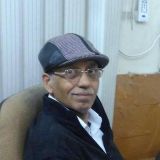Learn about Stroke on World Stroke Day
* It is second leading cause of death after Ischaemic heart disease and major cause of disability in the world as well as in India.
* One in six people worldwide will have a stroke in their life time.
* Every six second someone dies of stroke.
* Every two seconds someone in the world suffers a stroke.
* 20 million people experience a stroke each year and 6 million of them do not survive worldwide and five million more are left with chronic disability.
* Women have higher life time risk of stroke than men (1 in 5 vs 1 in 6) because of longer life expectancy in Women. The female population not only carries a higher burden of stroke during their life span – they also account for majority of stroke deaths. Strokes are common after the age of fifty years.
* Stroke can strike suddenly and can be fetal if assistance is not sought immediately.
* Stroke can be avoided by adopting a healthy life style and taking medication.
Considering the seriousness of the disease the World Stroke Organization (WHO) and Indian Stroke Association (ISA) are calling for immediate attention to address the epidemic of stroke. WSO and ISA are advocating for a comprehensive continuum approach from prevention to treatment and towards rehabilitation and long term support of these patients.
There are two types of major strokes
1. Ischaemic Stroke
2. Haemorrhagic Stroke
In the first type blood clots and blocks the blood to particular area of brain – known as Ischaemic Stroke which contributes to 80%. In the second type there is rupture of blood vessel and blood leaks in to the brain called as Haemorrhagic Stroke which contributes about 20% of all strokes. However, once a person gets a stroke it is important to find out what has caused it and trace the source of blood clot which has caused the block so that another potentially serious stroke can be prevented.
MINOR STROKES: A minor stroke also called as Transient Ischaemic attack or TIA. The features of minor stroke may be similar to those of major strokes but they are milder and lasts only for a short time usually less than an hour. Often the person recovers without treatment. These “minor strokes” are warning signs so one should not ignore them.
Tests like Doppler, CT Scan, MRI and certain blood tests which help to achieve the diagnosis. The most common test is CT Scan which tells us clearly the type of stroke and therefore, helps us about deciding the treatment.
Here are six steps any one can take to reduce the risk and danger of stroke:-
1. Know your personnel risk factors – high blood pressure, diabetes and high blood cholesterol.
2. Be physically active and exercise regularly, walking 30 minutes a day on most of days of the week.
3. Avoid obesity by keeping to a healthy diet.
4. Avoid Cigarette Smoking and Stress.
5. Limit Alcohol Consumption.
6. Learn to recognize the warning signs of stroke.
STROKE WARNING SIGNS
* Sudden numbness or weakness of face, arm or leg on one side of body.
* Sudden confusion or difficulty in speech or understanding language.
* Sudden trouble in seeing in one or both eyes or having double vision.
* Sudden vertigo.
* Sudden trouble in walking and loss of balance.
* Sudden severe headache with no cause.
* Sudden fainting or unconsciousness.
If one notice of these warning signs act fast. Stroke is a medical emergency and get to a hospital immediately. Don’t loose time.
Even if the symptoms disappears in a few minutes still consult the neurologist immediately, because it may be your last opportunity to prevent a potentially forthcoming major stroke. Since stroke is a medical emergency. Every minute counts when someone is having a stroke. The longer flow is cut off to the brain, the greater the damage, hence immediate treatment can save people’s lives and enhance their chances for successful recovery.
Ischaemic strokes, the most common type of strokes can be treated with a drug rt-PA which dissolves blood clots. The time is very important and the window of opportunity to start treating stroke is 3 to 4.5 hours so one has to get into the hospital with in shortest time. Haemorrhagic stroke is usually treated conservatively with decongestive therapy.
The best treatment for stroke is prevention
There are several risk factors that increase your chances of having a stroke.
* High Blood Pressure
* Diabetes
* Heart Disease
* High Cholesterol
* Smoking and Obesity
Preventing or keeping them under control will greatly reduce your chances of having a stroke.
Stroke is a leading cause of adult disability worldwide.
Stroke survivors need appropriate long term care and support.
PHYSICAL AND OCCUPATIONAL THERAPY
Most persons those who survive a stroke have some degree of post-stroke disabilities. They require good exercise and help of physiotherapist and speech therapist. Although rehabilitation does not reverse brain damage, it can substantially improve functions leading to better qualities of life. Persons who have had a stroke are in need of long term follow up for preventive strategies, risk factor control and regular check up for disabilities.
Stroke survivors may also experience following disorders
* Pain
* Depression
* Cognitive Decline
* Spasticity
These disorders require special attention and treatment
To improve the quality of life and to facilitate rehabilitation, it is essential that they have access to professional help as well as receive sustained emotional support from their families and friends.
It is strongly suggested to recognize the stroke and act fast to prevent disability and loss of life.
Prevention is better than cure, so by taking care of risk factor one can prevent brain attack in their life time. Regular exercise, good food habits, eating plenty of vegetables and fruits, controlling the blood pressure and blood sugar, avoiding excess of alcohol and quit smoking, follow the instructions of Neurologist on blood thinning drugs which are essential to prevent potentially disabling strokes. more



















